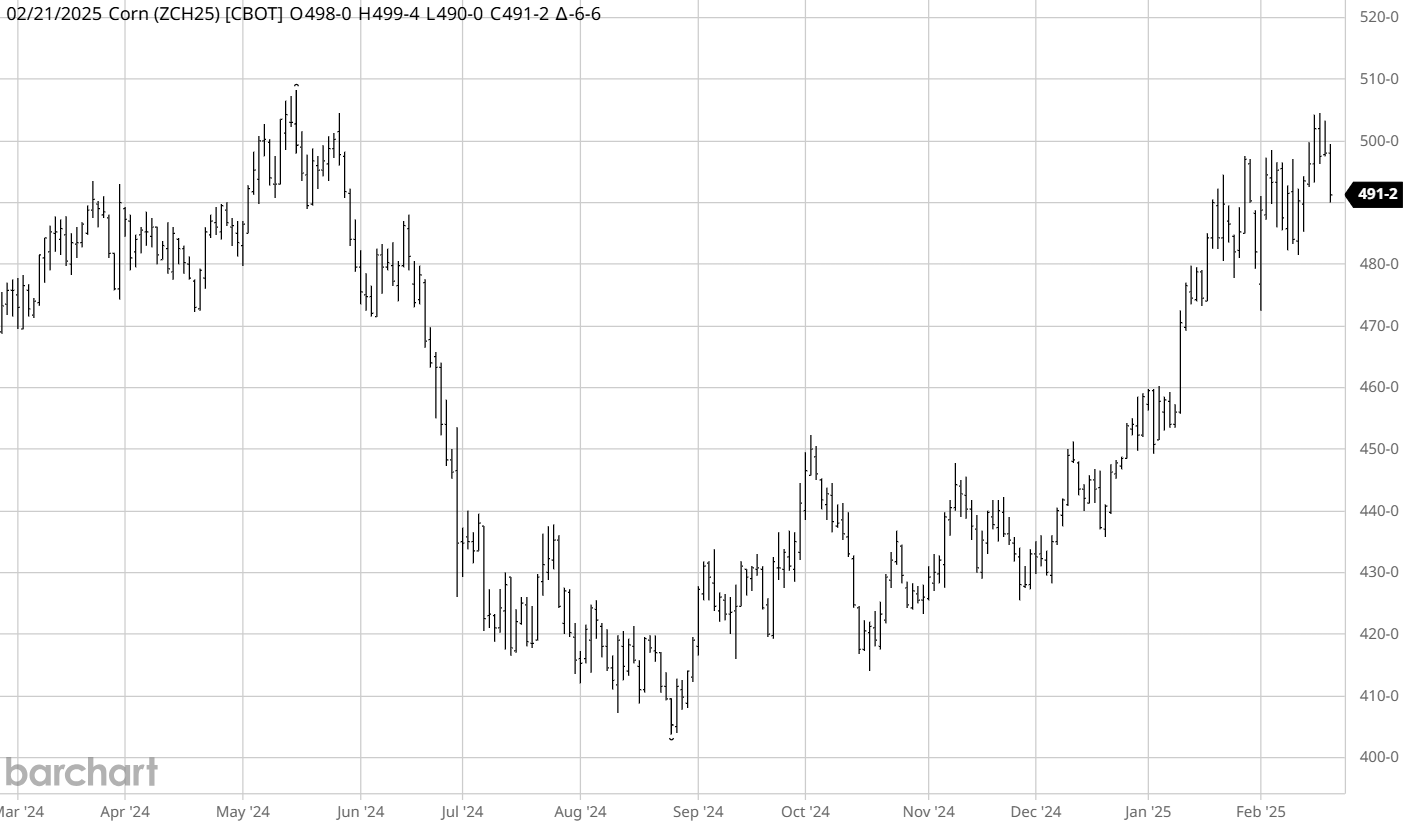King Corn
Today let’s start with corn, where weekly sales remain strong, pushing total 2024/25 commitments near 1.9 billion bushels - up 29% year-on-year and up 61% from 2022/23.
Cumulative commitments continue to exceed the pace needed to hit USDA’s current 2.45 billion bushel full-year estimate by more than 200 million.
2024/25 is quickly closing in on 2021/22’s pace and chugging right along toward 2020/21 (record year) - and that is WITHOUT any meaningful commitments from China.
(remember - China purchased a record 840mbu of US corn in 2020/21 and 540mbu in 2021/22, making for the US’ two largest export programs on record)
Tightening stocks prospects continued supporting futures last week, lifting March to a close above $5 on Tuesday:
The U.S. isn’t on an island, though (hint: this is a big driver behind our booming export program in 2024/25).
Corn prices in the heart of Mato Grosso continue their climb amid tight domestic supplies and growing domestic demand.
Markets also remains firm as producers are reluctant sellers with weather concerns/a slow start to Safrinha planting.
Cash values have rallied 18% since the beginning of 2025, are up 65% from this time last year, and sit at two-year highs near R$61.50/sac ($4.54/bu).
**IF the BRL remained unchanged year-to-date, cash corn in terms of dollars per bushel would be DOWN the equivalent of 30 cents YTD**
One of the largest fundamental drivers behind the United States’ return to corn export glory in 2024/25 is the fact Brazil’s stocks are on Ozempic.
Brazil’s corn stocks/use ratio sits at 2.1% in 2024/25 with an estimated 7.8 days of supply on hand, down from 7% and 26 days the year(s) before, leaving little room for error.
For reference, the U.S. currently sits at a 10.2% stocks/use ration with an estimated 37 days of supply on hand at the end of 2024/25.
THIS is why so much emphasis has been put on the success of Brazil’s Safrinha (second) corn crop in 2025.
The Safrinha crop now accounts for 80% of Brazil’s total corn production each year.
Today, Safrinha production is 2.5x larger than it was just 10 years ago and has grown 800% since 2005.
Cause and effect: the boom in Safrinha production is directly related to Brazil’s corn export growth in recent years.
Keep reading with a 7-day free trial
Subscribe to No Bull to keep reading this post and get 7 days of free access to the full post archives.










